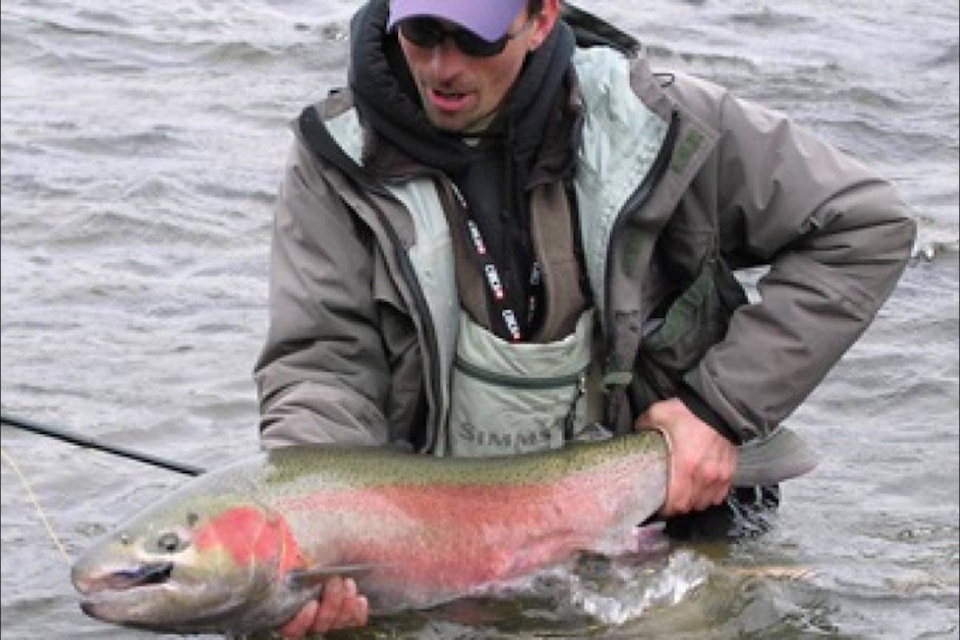According to the BC Wildlife Federation (BCWF), the few remaining Interior Thompson steelhead trout are stuck at the base of the Bonaparte River fishway, which is a major tributary of the Thompson River.
The steelhead cannot get to their spawning grounds because the Bonaparte fishway is inoperable due to heavy sedimentation and debris flows from the recent wildfires throughout the region.
Harvey Andrusak, BCWF president, is furious that the Department of Fisheries and Oceans (DFO) has known that this crucial fishway was impassable for months, but has not resolved the problem in time for the return of the vulnerable Interior Fraser steelhead. Andrusak said the Shuswap Nation alerted DFO and conservation groups months ago that Chinook salmon were stuck at the Bonaparte fishway and not able to reach their spawning grounds.
DFO observed only a few Chinook salmon ascending the fishway successfully. The BCWF wants to know why DFO did not inform the province of this issue, bring the province into the conversation, and work with them on resolving the problem.
“It is inexplicable that the Thompson River steelhead remain at risk with evidently little communication between the agencies,” says Andrusak.
The province apparently did not become aware of the issue until two weeks ago, and is now contemplating capture of steelhead to move them by truck around the fishway. Andrusak supports trucking the steelhead to where they can swim freely to their spawning grounds, but remains concerned about who is in charge of these fish and why DFO didn’t include the province in resolving the problem of fish passage.
“If this is an example of cooperation between DFO and the province then salmon, and especially steelhead, are in even more trouble,” he says. “The right hand does not know what the left hand is doing.”
The BCWF and other conservation groups have been calling on DFO to stop its outdated practice of allowing net fisheries on the Lower Fraser River to kill and entangle at-risk steelhead when caught as bycatch during commercial fisheries. The BCWF hosted a Selective Fishing Forum in March to share the science and research about alternative methods of fishing that would not further harm at-risk marine fish.
In February 2018, the Committee on the Status of Endangered Wildlife in Canada (COSEWIC) undertook an emergency assessment of Thompson and Chilcotin Steelhead. Both populations are being considered for listing as endangered. COSEWIC recommended an emergency listing order under the federal Species at Risk Act.
A graph in the COSEWIC report shows the alarming reduction in the number of Thompson Steelhead returning to the river each year since 1978. In 1985, 3,510 fish returned to spawn; but since 2009, only three years show more than 1,000 returning, and since 2015 that number has been below 500 each year.
In 2016 fewer than 400 fish returned to the Thompson, and only 177 fish returned from the ocean to the Thompson River and its tributaries, such as the Bonaparte and Deadman Rivers, in late fall 2017; an all-time low since records began in 1978.
Last year the province closed the steelhead fishery completely due to anticipated low returns of stock, and later closed all fishing on the Thompson River downstream from the Kamloops Lake outlet to the Thompson’s confluence with the Fraser River at Lytton in order to further protect the steelhead.
Premier John Horgan and DFO Minister Jonathan Wilkinson have announced $142 million for the restoration of salmon habitat. The BCWF says that funds should be made available to solve the fishway problem, so that Chinook salmon and Thompson steelhead can move through their next spawning season.
editorial@accjournal.ca
Like us on Facebook and follow us on Twitter
